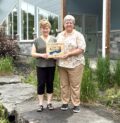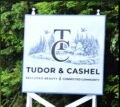Headline News
Ontario curriculum gives students social context of war
November 4, 2021
By Chris Drost
The Ontario school curriculum has changed in recent years and so Bancroft This Week reached out to teacher Chip Gillis, head of the Canadian World Studies Department at North Hastings High School to learn more about what students are learning.
The terminology in the curriculum changed in 2018, according to Gillis. While the section termed Canadian history since the First World War is listed as the starting point for learning, much is left to the discretion of the individual teacher to decide where to begin. “The curriculum document is fluid,” he explains.
Gillis backs things up a bit to set the stage for the start of the First World War. He covers the Boer War in 1899 and the Naval Service Bill of 1909 before moving on to spending two weeks teaching about the First World War 1914-1918. According to Gillis, the focus has changed away from learning names and dates to better understanding the social context.
Gillis teaches about important battles such as the Somme, the second battle of Ypres and Vimy Ridge. At Ypres, the Germans used poison gas for the first time so the students discuss how people can go so dark after initially agreeing not to use this gas. They learn that at Vimy Ridge, Canadian soldiers fought for the first time under Canadian leadership and then discuss what Vimy meant in the context of Canada becoming an independent nation. They learn that Canada was allowed to sign the Treaty of Versaille as a result of its efforts in the war.
The students also study the first battle of the Somme and how the regiment from Newfoundland was virtually wiped out, and the impact it had on those at home.
When the students begin to learn about the Second World War, they learn that we chose to go to war, compared to the First World War when we were part of the British Empire. In 1939, volunteers went knowingly to war, compared to the First World War.
Studies include the ill-fated battle at Dieppe and of course, D-Day.
Gills also teaches about how Canada trained pilots from all over the world as such training would not have been possible in Britain. It was from this effort that the World Intelligence Service emerged with Canada, the U.S. and Britain.
A considerable amount of time is spent learning about the Holocaust. Gillis uses such topics as the Japanese internment camps in Canada and Inuit tagging in 1941 when names were taken away and people were monitored for tuberculosis by numbers, to compare them to what was done in Nazi Germany.
“It is a positive move to discuss social context but also to include those numbers that help bring it to reality,” explains Gillis.
Figures such as 3,900 Canadian casualties at Vimy Ridge in one day, help put things in perspective.
Other areas of study include the Canadian connection to NORAD and its history in peacekeeping.
To help bring history to life, Gills reads as graphic novel of war based on a true story. The students are instructed to write a “trench letter” to help them understand from the perspective of a soldier what it was like to live and fight from the trenches.
Gillis tries to include Canadian produced documentaries to supplement the information he is teaching, although he does include the film, All Quiet on the Western Front. When they study the Holocaust, the students watch the 2008 film, The Boy in the Striped Pajamas. They also talk about Oscar Schindler and how he, a German, tried to help by saving many Jewish people.
“History can be a bit of a hard sell,” says Gillis.
The high school typically recognizes Remembrance Day with an assembly.




















